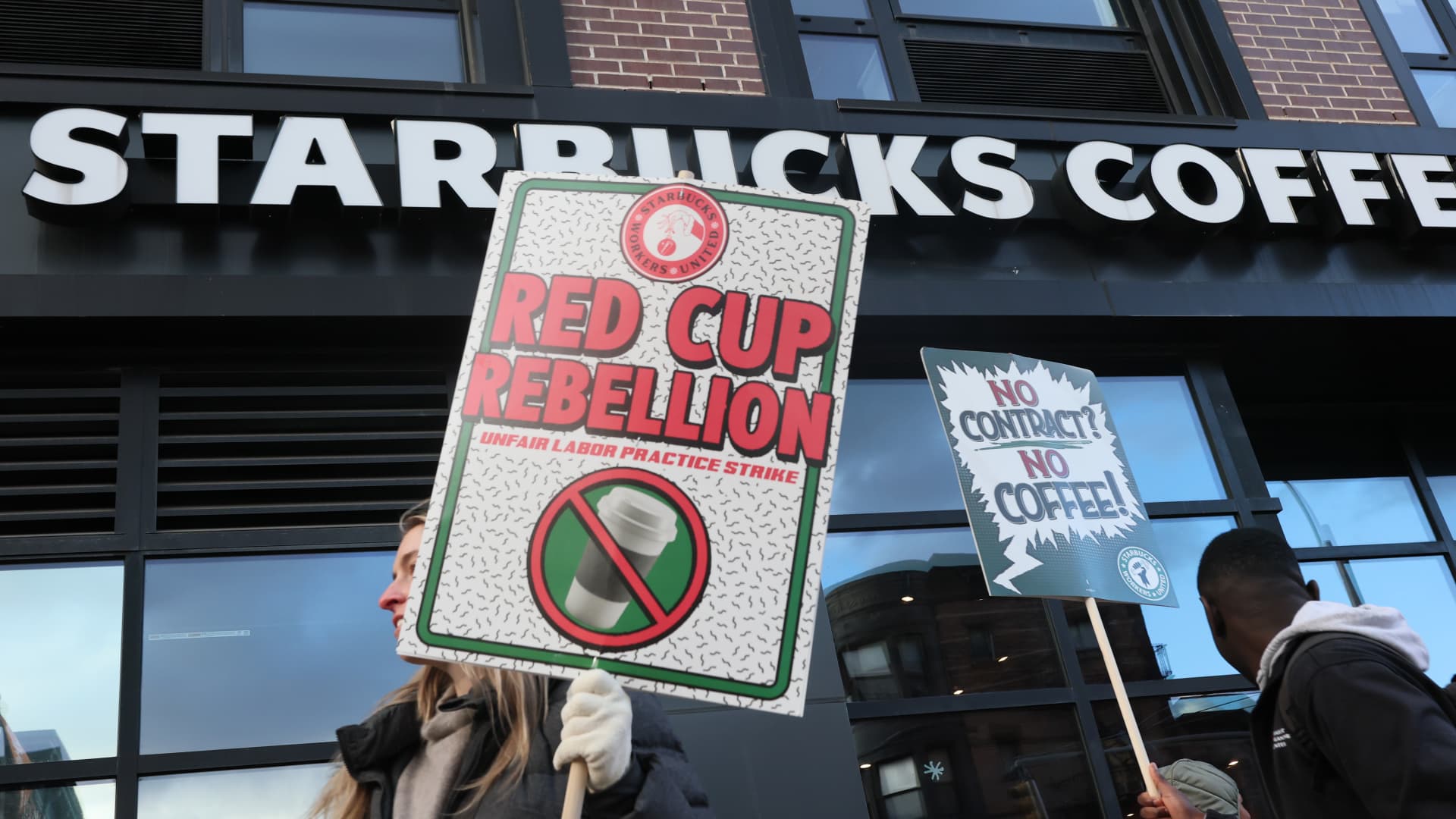Starbucks Strike Extends to More Stores and Cities

On November 13, 2025, over a thousand unionized Starbucks baristas walked off the job in what’s being called a “Red Cup Rebellion.” That date wasn’t picked by accident; it was actually Red Cup Day, one of Starbucks’ biggest sales days, when they hand out free reusable red cups to customers. The timing was strategic: if you’re going to make a point, you do it on the day that matters most to the company.
Starbucks strike started at roughly 65 stores across more than 40 U.S. cities, according to Starbucks Workers United, the union organizing the effort. But it didn’t stay small for long. Within a week, 30 additional stores in 25 more cities joined in, bringing the total to 95 stores across 65 cities.
What are these baristas striking for?
Three big things: fair wages, better staffing, and resolution of what they refer to as hundreds of unfair labor practice (ULP) claims. They argue the union negotiations broke down because Starbucks didn’t make a serious economic offer and didn’t meaningfully address working conditions.
Dachi Spoltore, a striking barista from Pittsburgh, put it simply: “We’re striking for a fair union contract, resolution of unfair labor practices, and a better future at Starbucks.” Michelle Eisen, a longtime barista and union spokesperson, added: “Striking baristas are making three very clear demands: more take-home pay, better hours and staffing, and fair treatment under the law.”
One of the more powerful lines came from Jasmine Leli, a three-year barista and strike captain in Buffalo, New York, who said, “Things have only gone backwards at Starbucks under Niccol’s leadership, but a fair union contract … and the resolution of hundreds of unfair labor practice charges are essential to the company’s turnaround.”
The union didn’t take this step lightly; 92% of Starbucks Workers United members voted to authorize the strike. That’s a huge turnout.
The company says the disruption has been minimal.
But Starbucks isn’t taking the strike lying down, either. In its response, this year’s Red Cup Day is the best so far in terms of sales and store traffic in the company’s history. They noted that more than 99% of its 17,000 U.S. locations remain open. According to Starbucks, only 49 of the 65 stores initially targeted by the union saw any disruption, and of those, 29 have since reopened.
A Starbucks spokesperson, Jaci Anderson, doubled down: when the union is ready to return to the negotiating table, Starbucks is, too. The company argues that its compensation is already competitive, pointing out that its hourly pay plus benefits averages over $30/hour for many of its partners. “…People choose to work here and stay here. Our turnover is less than half the industry average, and we receive more than a million job applications every year,” she adds.
“No Contract, No Coffee”
Still, the union isn’t taking the protest lightly and it might be a long time thing. They’re calling on customers to join them in what they call their “No Contract, No Coffee” campaign: the aim is that if there’s no fair contract, people should consider skipping their Starbucks for solidarity.
Politically, the strike has seen more support. Elected officials in various cities have joined picket lines. Meanwhile, things are intensifying in other ways: on November 19, the union set up a blockade at Starbucks’ largest distribution center in York, Pennsylvania, which is a major logistical hub for the Northeast.
On their side, union workers say they’re being ignored. “We know Starbucks’ success has to include and prioritize people like me who make the coffee … We’re proud of our work, but we’re tired of being treated like we’re disposable,” said Spoltore. The strike, they say, is the only way to push Starbucks to take them seriously.
Starbucks, for its part, denies the growth in union membership. In statements, the company emphasizes that only a small portion, about 4% of its U.S. workforce, is unionized, and says it wants to keep negotiating.
This is a serious time for Starbucks. The company is trying to revitalize growth after several quarters of slow or flat sales. Its current CEO, Brian Niccol, has pushed a restructuring plan called “Back to Starbucks.” As part of that, the company is closing some pickup-only stores, possibly converting others, and doubling down on improving in-store experience. The tension between cutting costs and meeting workers’ demands is very real.
There’s also the legal layer:
Starbucks Workers United has filed more than 1,000 unfair labor practice charges with the National Labor Relations Board. These include allegations that Starbucks has undermined union organizing, retaliated against union baristas, or otherwise failed to bargain in good faith.
As things stand, there’s no end date for the strike. Union leaders are clear: unless Starbucks brings meaningful new proposals, more stores could join.
And for customers, this is a moment to think. Do you keep grabbing your favorite holiday latte, or do you pause, even just for a moment, and ask what kind of workplace is behind that cup? That’s exactly the question these workers hope you’ll wrestle with.




